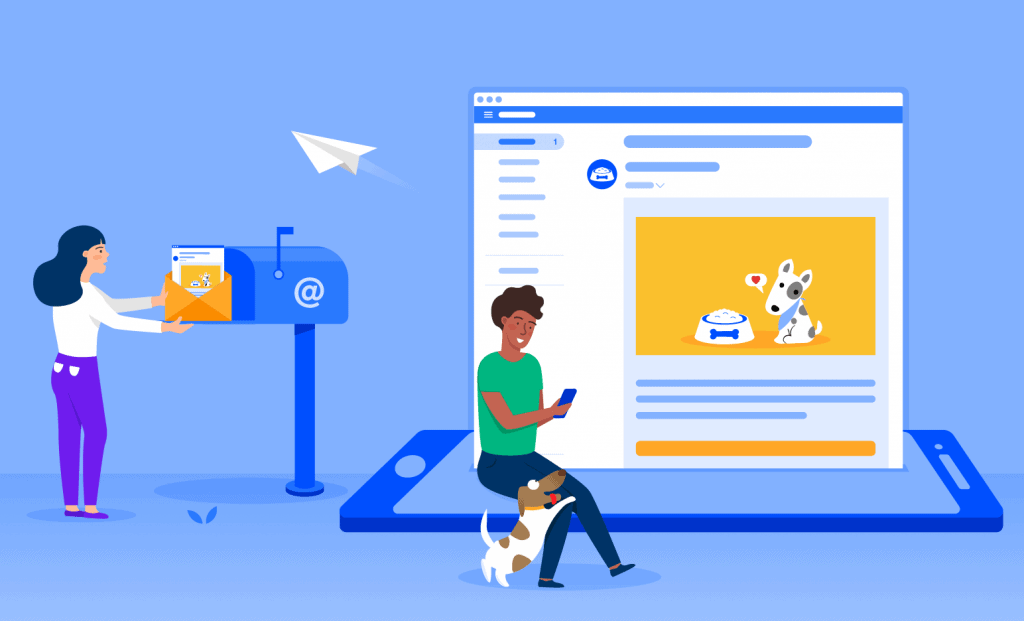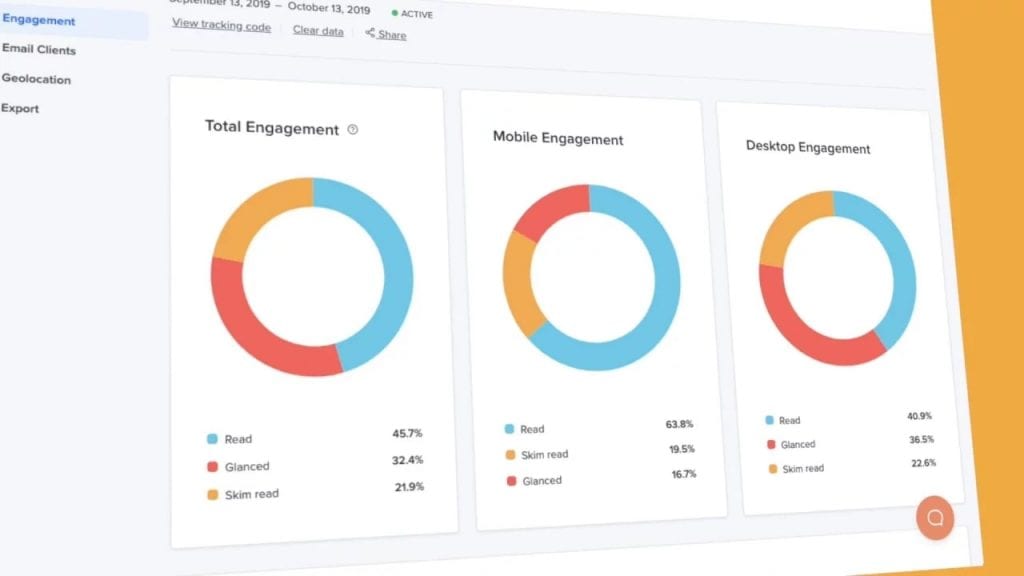Email Advertising: The Old Faithful of Digital Marketing
Email might seem like an old-school way to reach customers in our age of TikTok and the metaverse. But don’t be fooled – email is far from dead. It’s one of the most powerful tools in a marketer's toolbox.
Email allows you to connect directly with your audience in their inboxes. And people open and read emails – over 90% of consumers check email at least once daily. When done right, email advertising can drive serious results. Whether you want to increase sales, website traffic, or brand awareness, email should be a crucial part of your digital marketing strategy.
Table of Contents
A Brief History of Email Advertising
Email has been used for marketing purposes since the early days of the Internet. The first known commercial email was sent in 1971 by a Digital Equipment Corporation employee. The email advertised their new computer model to prospective customers.
Internet usage exploded in the 1990s, and email marketing followed suit. Marketers began collecting email addresses and segmenting lists. The CAN-SPAM Act was passed in 2003 to regulate commercial emails and protect consumers from spam.
As technology has advanced, email marketing has become more sophisticated. Marketers can now access detailed analytics on opens, clicks, and conversions. Email service providers enable complex automation and personalised messaging.
But the channel’s core appeal remains the same. Email provides a direct line to customers in a clutter-free, permission-based environment.
The Power of Email Marketing

So, what makes email such a valuable advertising channel? Here are some of its unique advantages:
High open and click-through rates
Email enjoys much higher open and click-through rates compared to other digital channels. Litmus found that the average email open rate is 21.33%, with retail emails seeing opens as high as 50%.
This trounces paid channels like social media ads, which have average click-through rates of 0.9% on Facebook and 0.05% on Twitter.
Low cost
Building and growing an email list is free. Once you have that list, the costs of sending emails are minimal – just the monthly fees charged by your email service provider (ESP).
Contrast this with paid social or PPC ads, where you continuously have to spend money for each impression and click.
Owned media
The media own your email list. You don’t have to play by another platform’s rules, and you aren’t at the mercy of algorithm changes.
You own the data and the channel. If you abide by permission marketing principles, you have complete control over your messaging and audience engagement.
Detailed analytics
Email provides metrics like open and click-through rates to gauge engagement. Marketing automation and email analytics tools offer further insights into subscriber behaviours and preferences.
This allows you to optimise your campaigns and improve results continually. Other advertising channels don’t offer the same depth of data.
Flexibility
Email can support various marketing objectives, from driving sales to building brand loyalty.
You can segment your lists based on customer needs and preferences. Dynamic content and personalisation let you deliver hyper-targeted, relevant messages.
Compare this to more rigid advertising formats like display ads or social posts. Email better adapts to your specific goals.
Relationship building
Used thoughtfully, email allows you to nurture long-term customer relationships. Through valuable content and tailored messaging, email builds trust and brand affinity.
Spammy tactics like aggressive sales pitches erode that hard-won loyalty. But a customer-centric approach makes everyone feel valued, not treated like a faceless wallet.
These unique advantages make email an essential component of a multifaceted digital marketing strategy. Even as new channels emerge, savvy marketers keep investing in email.
Creating an Effective Email Advertising Strategy

Hopefully, you’re convinced that email deserves your ad budget. But where do you start in building an email program that gets results? Follow these best practices to set your strategy up for success:
Build your list ethically
Quality trumps quantity when it comes to email lists. There’s no value in spamming people who have no interest in your product. Make sure every person has actively opted in to receive your emails.
Offer an irresistible lead magnet like a discount code or free ebook in exchange for signups. Be transparent about the content subscribers can expect to receive.
Never buy lists or scrape addresses without consent. You’ll wreck deliverability and earn quick unsubscribes. Cultivate a loyal audience that wants to engage with your brand.
Segment your lists
One-size-fits-all email blasts are ineffective. You need targeted segments tailored to customer interests and lifecycle stages.
Divide your master list into granular buckets like:
- New subscribers
- Power shoppers
- Brand advocates
- At-risk churners
- Loyalty members
- Lapsed customers
Create emails with each group in mind: Personalise subject lines and content to resonate with their needs.
Map the customer journey.
Take customers on an email journey tailored to their path to purchase. Welcome new subscribers, educate prospects, engage existing buyers, win back lapsed customers, and reward loyalty.
Map relevant email touchpoints across the entire lifecycle – from first impressions to loyal brand champions. Nurture each segment based on their stage and needs.
Promote cross-channel experiences
Don’t let email exist in a vacuum. Layer it into cross-channel journeys to tell a cohesive brand story.
Promote website content and social posts to drive traffic across channels: spotlight in-store events, webinars, or other interactive experiences. Email should support your broader marketing ecosystem.
Make mobile optimisation a priority.
Over half of the emails are opened on mobile. If your emails look wonky on a small screen, you’ll frustrate customers and tank engagement.
Use a mobile-first design with big CTAs and minimal scrolling. Test across devices to catch rendering issues. Mobile responsiveness is a must in email design today.
Obsess over deliverability
Your brilliant emails won’t drive ROI if they end up blocked or in spam folders. Deliverability is mission-critical.
Scrub your lists of bad addresses. Always include an unsubscribe link. Follow anti-spam regulations like the CAN-SPAM Act. Maintain sender reputation with major ISPs.
Deliverability should be an ongoing focus – it takes constant vigilance to stay inbox-bound.
Test and optimise
Treat your email program like a scientific experiment. Try different subject lines, content formats, calls to action, and segmentation strategies. Measure the impact on open rates, clicks, and revenue.
Testing reveals what resonates with your audience. You can double down on what works and eliminate what doesn’t. Optimisation is critical to improving email performance over time.
Email Advertising Tactics and Formats
Okay, you have your foundational strategy dialled in. Now, let’s get tactical. Here are some of the most effective email formats and tactics to incorporate into your campaigns:
Welcome emails
Welcome new subscribers by immediately delivering value. Give them an exclusive coupon code or special content offer as a thank-you for signing up.
Welcome emails have higher open rates compared to other campaign types. Make sure subscribers start their journey on the right foot.
Cold outreach
Target new leads with personalised cold outreach emails. Grab attention with subject lines highlighting shared connections or recent trigger events. Keep copy brief and focus on value.
Cold email is much cheaper than other forms of lead generation. Do your research and craft relevant messages tailored to each prospect.
Cart abandonment emails
Rescue abandoned shopping carts with targeted follow-up emails. Remind customers of their left items and offer an incentive to complete the purchase.
Cart abandonment emails can recover up to 25% of revenue left on the table. The quicker you deploy them, the higher your reclamation rates.
Customer win-back campaigns
Attempt to re-engage inactive or churned customers with “we want you back” emails. Use personalised subject lines mentioning past purchases. Offer special coupons or perks to incentivise an investment.
According to Epsilon, brands that execute win-back campaigns enjoy up to a 20% higher retention rate. Email brings lapsed customers back into the fold.
Customer re-engagement
Keep engaged customers engaged with relevant and valuable re-engagement emails. Share product updates, new features, helpful tips, or industry insights.
Send re-engagement emails when you have substantive content to provide – don’t over-email for the sake of emailing. Find ways to add ongoing value.
Holiday-themed emails
Match the season by sending holiday-specific emails like for Halloween, Black Friday, and Christmas. Adapt creative with relevant images, colours, and messaging.
Holiday emails see open rates around 25%, far above average. Tap into seasonal excitement by dressing up your creativity.
Email newsletters
Send recurring newsletters with news, educational content, promotions, or entertainment. Schedule monthly, weekly, or even daily editions.
Email newsletters build brand awareness and trust over time. Consistency is key – stick to your cadence and make subscribing worthwhile.
Limited-time flash sales
Drive urgency with flash sale emails announcing short-term discounts or perks. Limit the offer's duration to incentivise immediate action.
Flash sales lead to a quick dopamine hit for shoppers by creating FOMO. Time your emails strategically to align with buying cycles.
Behavior-triggered emails
Use marketing automation to deploy emails based on customer behaviours like:
- Site browsing
- Shopping cart abandonment
- Lapsed usage
- Missed deliveries
- Low inventory alerts
Behavioural data enables hyper-targeted, one-to-one messaging timed for maximum impact.
Promotional calendars
Plot your campaigns on an editorial calendar to ensure consistent and strategic messaging. Align promotions with seasonal events, product launches, or company news.
An annual calendar provides a high-level blueprint, while monthly/weekly plans allow tactical flexibility. Coordinate emails across channels.
Take a portfolio approach using a diverse mix of formats tailored to campaign goals. Test new tactics continuously to see what resonates most with your audience.
Designing Killer Email Creatives

Even the most brilliant strategy will flop without effective email design. You have a few seconds to grab attention in crowded inboxes. Follow these design tips to look slick and professional:
Catchy subject lines
Subject lines preview the content and set expectations. Keep them short and benefit-driven, like:
- Download Our 2023 Industry Report
- $20 Off Your Next Purchase
- Your Order Shipped Today!
Subject lines appear in inbox previews on mobile. Make them crisp and compelling.
Clear calls to action
Every email needs one prominent CTA like “Shop Now” or “Download Ebook”. The CTA button should use high-contrast colours from the rest of the design.
Place your CTA in the first half of the email before the above-the-fold space runs out on mobile. Don’t hide it at the bottom.
Tight copy
Less is more in email. Get to the point quickly in a scannable format:
- Short paragraphs
- Bulleted lists
- Numbers and data
- Subheaders
Remove unnecessary words. Use active voice and stay concise. Make your emails easy to digest at a glance.
Relevant imagery
Include images to make your emails visually appealing. Show product photos, user photos, infographics, GIFs, etc.
Keep images on-brand and relevant to your message. Don’t insert random stock photos that look out of place.
Clear hierarchies
Use typography, colour contrasts, and whitespace to create hierarchy and order. Guide readers down the page through logical eye paths.
Make key elements like headlines and CTAs prominent. Secondary information, like a legal copy, should have a lower visual weight.
Mobile optimisation
Over half of email opens occur on smartphones. Mobile optimisation is non-negotiable:
- Single column layout
- Responsive design
- Large tap targets
- Minimal scrolling
- Legible line length
Test across mobile devices before launch. If your email looks wonky on a phone, results will tank.
Brand consistency
Maintain your brand identity across all emails. Use the same logo, colours, image style, and fonts as your website and other collateral.
Email is not a siloed channel. Treat it as an extension of your broader brand ecosystem.
With these design principles, you can craft professional, polished emails worth opening. Just avoid over-stuffing with links and images, which triggers spam filters. Keep emails simple yet stylish.
Optimising Workflows with Email Automation

The hallmark of sophisticated email programs is automation through lifecycle workflows. This moves subscribers through predetermined journeys tailored to their needs.
Events like signup, purchase, date, inactivity, etc trigger workflows. You can create personalised paths like:
- Browse abandonment: Send cart recovery email X hours after abandonment
- Post-purchase: Deliver satisfaction survey 48 hours after purchase
- Loyalty rewards: Auto-enroll customer in VIP program after 5th purchase in 6 months
- Reengagement: Send promo email if inactive for 3+ months
- Milestone rewards: Give a $10 coupon on the customer’s first anniversary
Automation frees you from repetitive manual tasks. Workflows nurture customers based on their behaviours over time.
Just be sure you have an ESP supporting automation. Popular platforms like MailChimp, Drip, and Customer.io have excellent workflow builders.
Measuring Email Success with Key Metrics

To grow and refine your email program, you need to monitor performance through critical metrics:
Open rate
This reveals how compelling your subject lines and sender reputation are. Benchmark against your industry average.
Click-through rate
How many subscribers click your links and CTAs? High CTR signals relevance.
Bounce rate
What % of emails hard bounce due to invalid addresses, full inboxes, etc? Lower bounce rates boost deliverability.
Unsubscribe rate
Are many subscribers opting out of your list? A big unsub spike means your content is missing the mark.
Sales revenue
For ecommerce brands, track revenue directly attributed to email campaigns. ROI matters most.
Study metrics over the email journey lifecycle. Identify high- and low-performing segments to shape strategy.
Tools like MailChimp and Google Analytics make list segmentation and email reporting easy. Learn from your data to improve.
FAQs Around Email Advertising
If you’re new to email marketing, you may still have some questions. Here are answers to the most frequently asked questions:
How do I get people to subscribe to my list?
Offer an irresistible lead magnet like an ebook, toolkit, or discount in exchange for emails. Be transparent about the type of content you’ll send. Embed signup forms on your site and advertise your giveaway.
What email service provider should I use?
Leading options like MailChimp, Constant Contact, and ConvertKit, all have affordable plans for different needs. Look for critical features like automation, analytics, and integrations.
How often should I email my list?
There’s no one-size-fits-all answer. Map relevant touchpoints throughout the customer lifecycle. Avoid overly spammy frequencies that cause unsubscribes. Test to find the sweet spot based on your audience.
How do I make my emails look good?
Use an email template from your ESP or a dedicated email design platform. The templates handle responsive layouts and styling. You just plug in your branding and content.
How do I get past spam filters?
Follow anti-spam best practices, maintain your sender reputation, and authenticate your domain. Utilise a dedicated IP address from your ESP if possible. Keep emailing consistently to build rapport with ISPs. Deliverability takes work!
Ready, Set, Email
There you have it – a complete guide to unlocking the potential of email advertising.
When executed with purpose, email delivers tremendous value. It forges direct connections with customers in a cost-efficient, metrics-driven way.
Remember always to get permission, nurture your list, automate workflows, meticulously design your creatives, and continuously optimise based on data.
Treat email as an ongoing journey with customers, not a one-off blast. With a thoughtful strategy tailored to your business, email can drive serious growth.
Now it’s time to start building your subscriber list, crafting campaigns, and analysing results. You've got this! Let me know if you have any other email marketing questions. I'm always happy to help.
